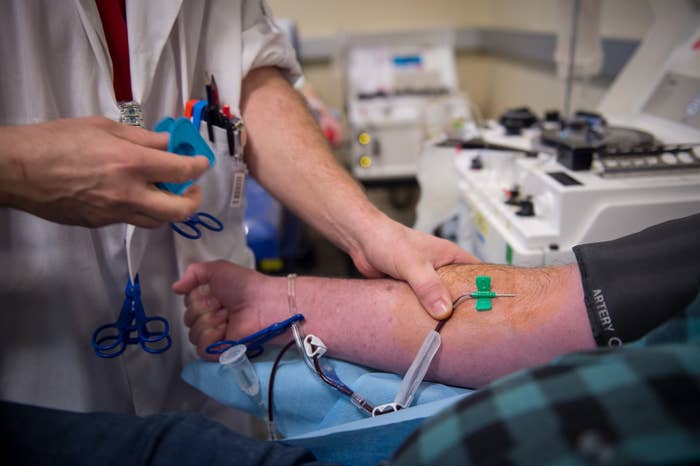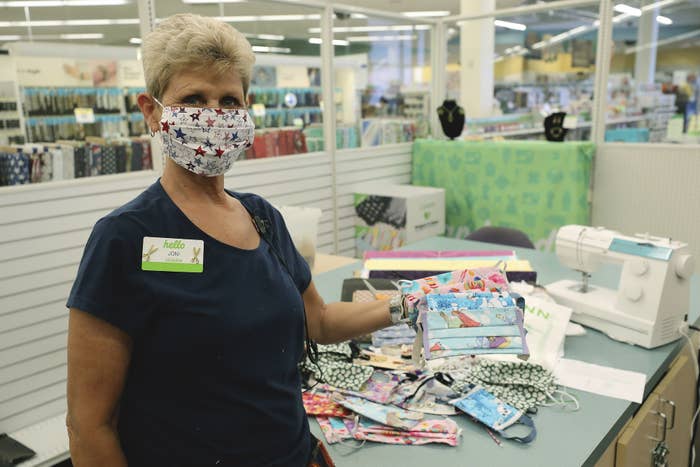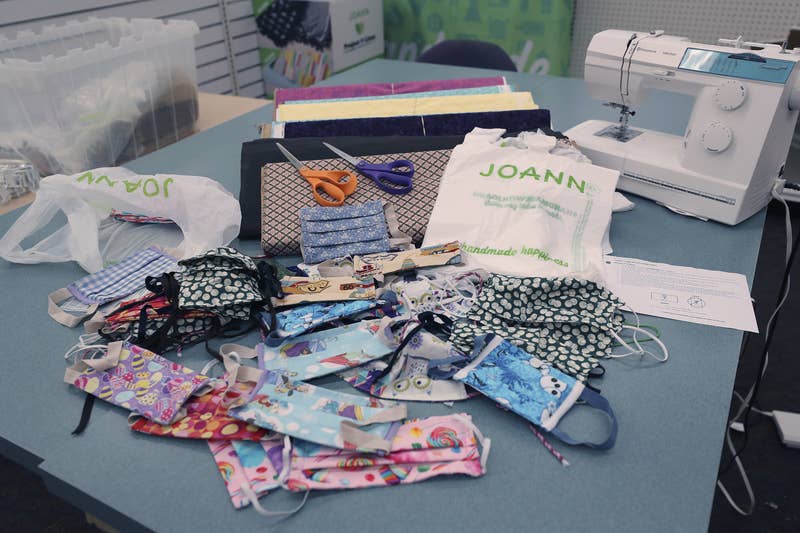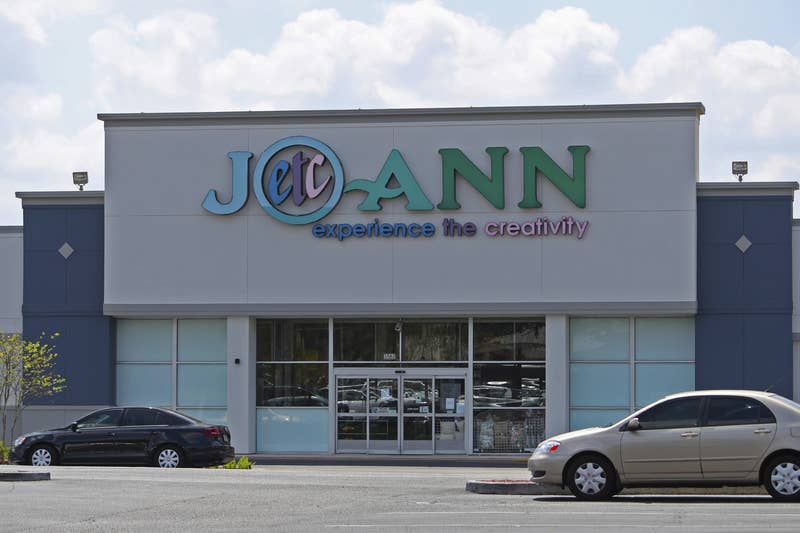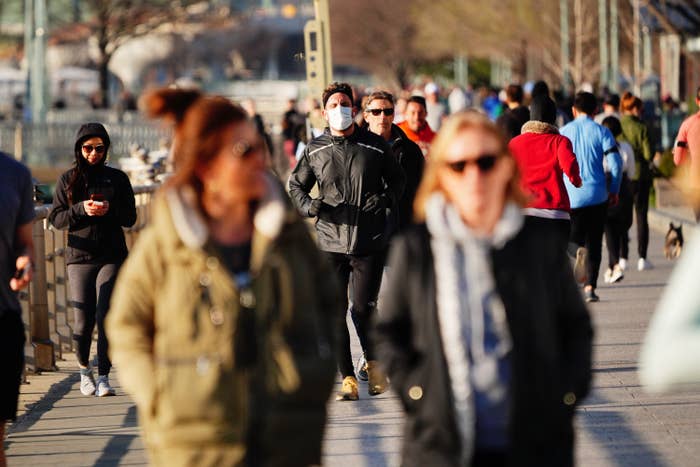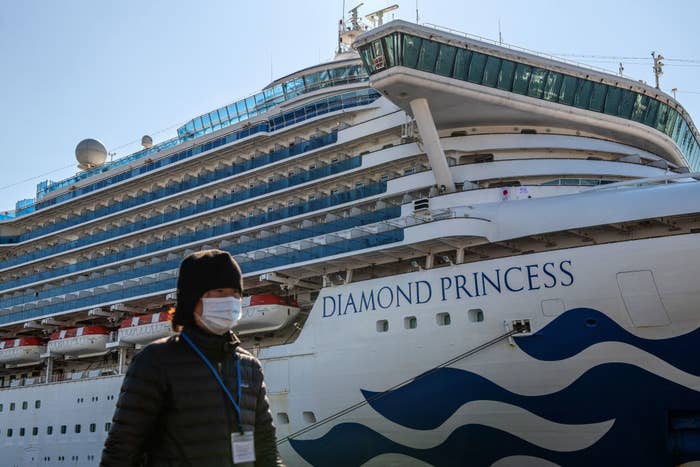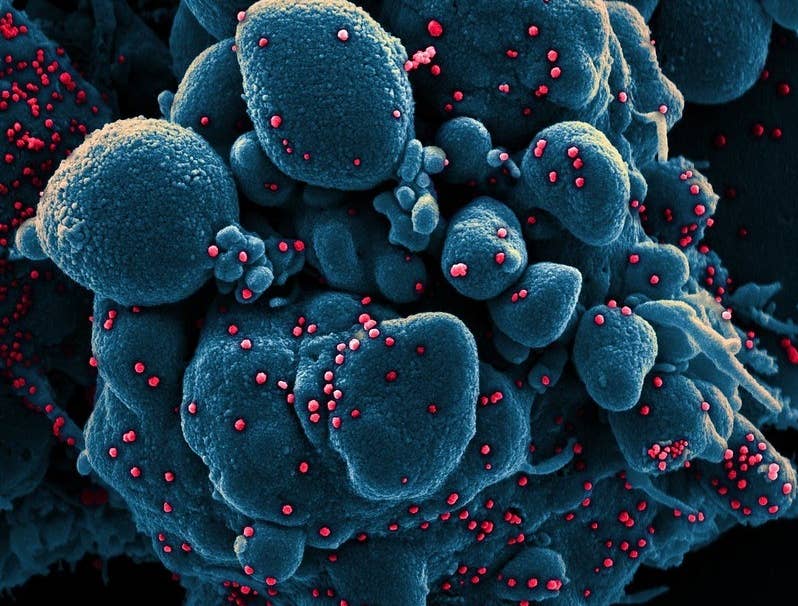April 2, 2020 By Sarah K. Burris

The captain of the nuclear aircraft carrier the USS Theodore Roosevelt begged for help while the coronavirus quickly spread among his crew. While Capt. Brett Crozier may have been on track to be an Admiral, he’s now been relieved of command.
It prompted outrage online as people demanded he be reinstated. Many noted that the captain only received help after the letter was released to the public. Amid the chaos of the crisis, the White House, Pentagon and Trump government has been caught flat-footed as they scramble to make up for lost time.
The White House is pushing back against criticism saying that they founded the coronavirus task force at the end of January. It begs the question then why the task force didn’t work on the shortage of ventilators and personal protective equipment then or why they didn’t usher in a shutdown then.
Some noted that Capt. Crozier was trying to save lives, where Eddie Gallagher, who was convicted of war crimes, was pardoned by the president.
You can see the outrage about Capt. Crozier below:
Can’t have a Captain speaking truth. That doesn’t make the WH look good.
—

Rob Anderson for Louisiana (@RobAnderson2018) April 2, 2020
All of these things happening is on you Trumpsters, all of it! in your hands!
— ellie gamble (@GambleNini) April 2, 2020
Why, cause saving lives to prevent this serious outbreak from being swept under the rug is NOT how this admin works?
— Anne T. (@at_lv61) April 2, 2020
Sounds like some China shit
— chandler hart (@chan_man36) April 2, 2020
We have to take our country back from this tyrannical government who hates truth. This move by the @USNavy is disgusting.
— Dragon Fire (@dawnndragonfire) April 2, 2020
Navy SEAL Eddie Gallagher was pardoned and reinstated by Trump despite being found guilty of war crimes by a jury of his peers. U.S. Navy Captain Brett Crozier was removed from his command for sounding the alarm on COVID danger to sailors under his authority. Trump's military.
— Lady Charlotte Clymer
All of these things happening is on you Trumpsters, all of it! in your hands!
— ellie gamble (@GambleNini) April 2, 2020
Why, cause saving lives to prevent this serious outbreak from being swept under the rug is NOT how this admin works?
— Anne T. (@at_lv61) April 2, 2020
Sounds like some China shit
— chandler hart (@chan_man36) April 2, 2020
We have to take our country back from this tyrannical government who hates truth. This move by the @USNavy is disgusting.
— Dragon Fire (@dawnndragonfire) April 2, 2020
Navy SEAL Eddie Gallagher was pardoned and reinstated by Trump despite being found guilty of war crimes by a jury of his peers. U.S. Navy Captain Brett Crozier was removed from his command for sounding the alarm on COVID danger to sailors under his authority. Trump's military.
— Lady Charlotte Clymer

(@cmclymer) April 2, 2020
This sounds like…China:
“The Navy is expected to announce it has fired the captain who sounded the alarm about an outbreak of COVID-19 aboard the USS Theodore Roosevelt.” https://t.co/Y7bchQ9JwE
— Amy Siskind
This sounds like…China:
“The Navy is expected to announce it has fired the captain who sounded the alarm about an outbreak of COVID-19 aboard the USS Theodore Roosevelt.” https://t.co/Y7bchQ9JwE
— Amy Siskind

(@Amy_Siskind) April 2, 2020
ABJECT STUPIDITY! @SECNAV @USNavyCNO @NavyMCPON. You had better drop your anchors on this one. This “sailors first” admiral may be Secretary of the Navy next Jan. He should be because he cares more about my beloved Navy than you do. https://t.co/13jk4AHfXI via @nbcnews
— Malcolm Nance (@MalcolmNance) April 2, 2020
This is an absolute disgrace.
This captain should be honored for saving lives and caring for our service people in ways @realDonaldTrump and the @GOP never will.#MAGA, indeed.https://t.co/U0Wyk9QHf0
— John Pavlovitz (@johnpavlovitz) April 2, 2020
The captain of an aircraft carrier warned that action was needed to keep sailors from dying. With actual lives at stake, the Navy acted swiftly to…dismiss the captain because his letter went public https://t.co/YeMKQmkbkc
— Mark Berman (@markberman) April 2, 2020
The Trump administration rewards war criminals like Eddie Gallagher & fires a Captain advocating for the health & welfare of his crew. #Navy #TrumptheWorstPresidentEVER
— JJ MendIovitz (@jaybirdsatx) April 2, 2020
Sad to hear that the Navy has fired the Captain of the USS Roosevelt because he informed them of sailors with the virus… #USSTheodoreRoosevelt
— coffee-talk (@coffeet90685829) April 2, 2020
Captain Brett Crozier pleaded for help as #coronavirus cases increased aboard USS Theodore Roosevelt. The Navy relieved him of command.
“Sailors do not need to die… We are failing to properly take care of our most trusted asset — our sailors.” #COVID19https://t.co/k1897webuY pic.twitter.com/SbqNzg3JmW
— Bryan Dawson (@BryanDawsonUSA) April 2, 2020
Navy Captain Brett Crozier was removed from the USS Theodore Roosevelt I’m sure because he wrote a letter to his superiors imploring them for help. In my mind as a former Navy wife (husband USN/Ret) he’s a hero! #NavyHero
— DoodleMom (@SnowflakePeg) April 2, 2020
@JoeBiden Since I'm sure that you will be our next president (Thank God!), 1 of your 1st acts should be the restoring of Captain Brett Crozier as commander of the USS Theodore Roosevelt. Or how about Sec of the Navy? A captain who safeguards his sailors should't lose his command. pic.twitter.com/RhFh9r3eyj
— A Horse With No Name (@b111861) April 2, 2020
More than 100,000 Americans are expected to die after a slow initial government response to the coronavirus pandemic and the first person to be fired is … the aircraft carrier captain who pleaded for help for his stricken crew. @ckubeNBC https://t.co/guDOImfekb
— Peter Baker (@peterbakernyt) April 2, 2020
If a single sailor dies, this will be Trump’s Benghazi. #USSTheodoreRoosevelt https://t.co/EfSocqhqi5
— j.jo. (@tickedoffJJ) April 2, 2020
@USNavyCNO God bless Capt. Brett Crozier who thought more of his crew than you & Donald Trump.
Capt Crozier did the right thing. His sailors, & the American people, thank him, salute him, & we’ll never forget him.#USSTheodoreRoosevelt #COVID19 #USNavy #KAG #TrumpVirusCoverup https://t.co/Tnvj8OUwoD
— Smiling_Lillie
ABJECT STUPIDITY! @SECNAV @USNavyCNO @NavyMCPON. You had better drop your anchors on this one. This “sailors first” admiral may be Secretary of the Navy next Jan. He should be because he cares more about my beloved Navy than you do. https://t.co/13jk4AHfXI via @nbcnews
— Malcolm Nance (@MalcolmNance) April 2, 2020
This is an absolute disgrace.
This captain should be honored for saving lives and caring for our service people in ways @realDonaldTrump and the @GOP never will.#MAGA, indeed.https://t.co/U0Wyk9QHf0
— John Pavlovitz (@johnpavlovitz) April 2, 2020
The captain of an aircraft carrier warned that action was needed to keep sailors from dying. With actual lives at stake, the Navy acted swiftly to…dismiss the captain because his letter went public https://t.co/YeMKQmkbkc
— Mark Berman (@markberman) April 2, 2020
The Trump administration rewards war criminals like Eddie Gallagher & fires a Captain advocating for the health & welfare of his crew. #Navy #TrumptheWorstPresidentEVER
— JJ MendIovitz (@jaybirdsatx) April 2, 2020
Sad to hear that the Navy has fired the Captain of the USS Roosevelt because he informed them of sailors with the virus… #USSTheodoreRoosevelt
— coffee-talk (@coffeet90685829) April 2, 2020
Captain Brett Crozier pleaded for help as #coronavirus cases increased aboard USS Theodore Roosevelt. The Navy relieved him of command.
“Sailors do not need to die… We are failing to properly take care of our most trusted asset — our sailors.” #COVID19https://t.co/k1897webuY pic.twitter.com/SbqNzg3JmW
— Bryan Dawson (@BryanDawsonUSA) April 2, 2020
Navy Captain Brett Crozier was removed from the USS Theodore Roosevelt I’m sure because he wrote a letter to his superiors imploring them for help. In my mind as a former Navy wife (husband USN/Ret) he’s a hero! #NavyHero
— DoodleMom (@SnowflakePeg) April 2, 2020
@JoeBiden Since I'm sure that you will be our next president (Thank God!), 1 of your 1st acts should be the restoring of Captain Brett Crozier as commander of the USS Theodore Roosevelt. Or how about Sec of the Navy? A captain who safeguards his sailors should't lose his command. pic.twitter.com/RhFh9r3eyj
— A Horse With No Name (@b111861) April 2, 2020
More than 100,000 Americans are expected to die after a slow initial government response to the coronavirus pandemic and the first person to be fired is … the aircraft carrier captain who pleaded for help for his stricken crew. @ckubeNBC https://t.co/guDOImfekb
— Peter Baker (@peterbakernyt) April 2, 2020
If a single sailor dies, this will be Trump’s Benghazi. #USSTheodoreRoosevelt https://t.co/EfSocqhqi5
— j.jo. (@tickedoffJJ) April 2, 2020
@USNavyCNO God bless Capt. Brett Crozier who thought more of his crew than you & Donald Trump.
Capt Crozier did the right thing. His sailors, & the American people, thank him, salute him, & we’ll never forget him.#USSTheodoreRoosevelt #COVID19 #USNavy #KAG #TrumpVirusCoverup https://t.co/Tnvj8OUwoD
— Smiling_Lillie

(@lillie_randolph) April 2, 2020
So USS Navy Commander is scapegoat & been relieve of his duty because his letter got leak or release to the media – That's just BullShxt#Dems #BlueWave @TheDemocrats #USNavy #USSTheodoreRoosevelt #Navy
— Steph Banatte (@bana2166) April 2, 2020
This is reprehensible. If anything, an officer should be commended for trying to save the lives of those who serve with him. #USSTheodoreRoosevelt https://t.co/7UxXfsCgaj
—
So USS Navy Commander is scapegoat & been relieve of his duty because his letter got leak or release to the media – That's just BullShxt#Dems #BlueWave @TheDemocrats #USNavy #USSTheodoreRoosevelt #Navy
— Steph Banatte (@bana2166) April 2, 2020
This is reprehensible. If anything, an officer should be commended for trying to save the lives of those who serve with him. #USSTheodoreRoosevelt https://t.co/7UxXfsCgaj
—

Rosemary McLaughlin (@RosemaryMcL) April 2, 2020
.@EsperDoD you clearly don’t give rats ass abt soldiers/sailors/airmen under your command by letting @SECNAV relieve #CaptBrettCrozier of #USSTheodoreRoosevelt command. @realDonaldTrump Admin’s incompetence & lack of care for men/women under its command > its lack of decency.
— DM VOTE BLUE (@dceagle11) April 2, 2020
No one. Not one American should ever wonder how the Nazis intimidated, took over Germany, and murdered millions.
Trump and all his lackeys, including the spineless DODers, are trying to destroy our republic.
What are we prepared to do?#USSTheodoreRoosevelt #Crozier https://t.co/R2SscF01tn
— Rachel Cunningham (@RCHanoi) April 2, 2020
.@EsperDoD you clearly don’t give rats ass abt soldiers/sailors/airmen under your command by letting @SECNAV relieve #CaptBrettCrozier of #USSTheodoreRoosevelt command. @realDonaldTrump Admin’s incompetence & lack of care for men/women under its command > its lack of decency.
— DM VOTE BLUE (@dceagle11) April 2, 2020
No one. Not one American should ever wonder how the Nazis intimidated, took over Germany, and murdered millions.
Trump and all his lackeys, including the spineless DODers, are trying to destroy our republic.
What are we prepared to do?#USSTheodoreRoosevelt #Crozier https://t.co/R2SscF01tn
— Rachel Cunningham (@RCHanoi) April 2, 2020



















